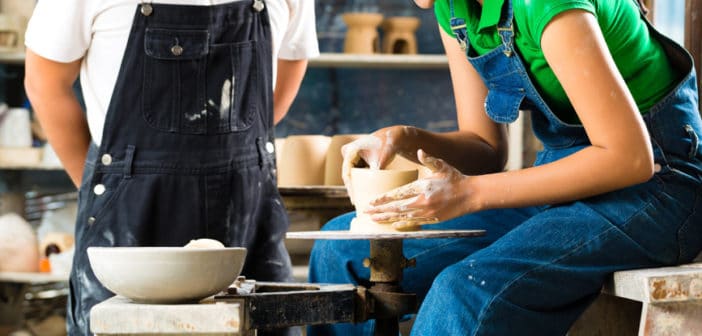This post was originally published on July 21, 2015.
As the need for substance abuse rehab grows, so does the availability of more out-of-the-box treatment accouterments—like art therapy. While this elective may be generally only available at higher-end (aka higher-priced) facilities, it’s certainly popping up more and more. Although I am a proud member of a 12-step program, I’ve actually never been to rehab myself; but several of my meeting buddies who did go to treatment pinpoint art therapy as having helped their recovery tremendously. Oddly though (yet not uncommonly), most of them admit they did not continue it after rehab. Of course, they all have varying excuses—which can all be summed up into not being able to find the time—but anyone in recovery knows that excuses are just that: excuses.
Not to invoke tough love but the same way we don’t just take vitamins when we’re sick, (ideally) we take them daily to avoid getting sick, the same thinking should apply to therapeutic self-care—like making our beds, going to meetings and continuing art therapy after rehab. These are all ways in which we maintain our recovery so we don’t get sick again.
For me, art was therapy before you had to pay thousands of dollars to a palatial estate in Malibu to get it. I grew up in a family of artists and creators. Instead of giving us dolls or telling us to play hide and seek, my mom would give us a hunk of clay and tell us to create something. My dad often took us to the Los Angeles County Museum of Art (LACMA) to see the latest exhibition, showed us how to cook a fancy new meal or signed us up for a figure drawing class at the local art center—not exactly the arcade and pizza party my peers were accustomed to. If one of us got upset, my mom sent us to our rooms to sketch in our sketchbooks or write in our journals. From day one, my sister and I were taught that creativity was a means by which we could express ourselves healthily and positively. And it worked—she became an artist and I became a writer and photographer. And I am so grateful for this early training because our family’s proclivity for creative expression ended up saving us both.
When I told my mom that I had been struggling with cocaine addiction and that I wanted to get sober, she immediately went out and got me a new journal. She knew I hadn’t been writing and pointed out that maybe that’s why I was so confused and lost.
While my sister took to drawing and painting, I was always into writing. I kept a journal when I was younger and was always writing short stories or blogging about my feminist opinions. But sometime around my second semester of college, I stopped. I don’t remember why—maybe it was the stress, maybe I was too busy discovering my own freedoms—but I don’t think it’s a coincidence that my habitual use of cocaine also started around this time. I had stopped being accountable to the page; my thoughts became disorganized, I couldn’t make sense of my emotions and I certainly didn’t understand my life’s purpose or know what I wanted.
When I cracked open the new journal my mother so lovingly and thoughtful bought for me, I tried writing in it and it was if I had never written before—I didn’t know what to say or where to start. I managed to squeeze out one or two sentences and then it happened—the dam burst! It was incredible, all these thoughts and reflections came pouring out of me and I couldn’t write fast enough. Not long after, I got a job as a writer and was gifted the opportunity to share my experiences with people. This has been the best therapy of all. I still struggle, but whenever I do, I just take to my journal or pitch a new essay idea. This allows me to not only release my frustrations and help myself but possibly help others as well.
My sister was saved in a different way. After having been diagnosed with brain cancer, she started making videos, producing zines and—most recently— putting on a collective art show called Patient Experience with other local artists who suffer from illness. The goal is to inspire a conversation about illness in our society. By the time they put on their first show, “Side Effects May Include Art,” my sister was going through her second, more intensive round of chemo and she says she never felt stronger. Whenever she is back in the hospital, she tells me she thinks about what Patient Experience can do next.
While art and creative expression as therapy might not be backed by science or fall under the umbrella of evidence-based treatment, there no doubt (in my mind, at least) that it is just as helpful. Some people use it to understand themselves, some people use it to bring lightness to their journey out of addiction, and some people just use it because it brings them peace.
But no matter what you use it for, make sure to use it. It’s time you make time for your art therapy vitamins.
Sponsored DISCLAIMER: This is a paid advertisement for California Behavioral Health, LLC, a CA licensed substance abuse treatment provider and not a service provided by The Fix. Calls to this number are answered by CBH, free and without obligation to the consumer. No one who answers the call receives a fee based upon the consumer’s choice to enter treatment. For additional info on other treatment providers and options visit www.samhsa.gov.





